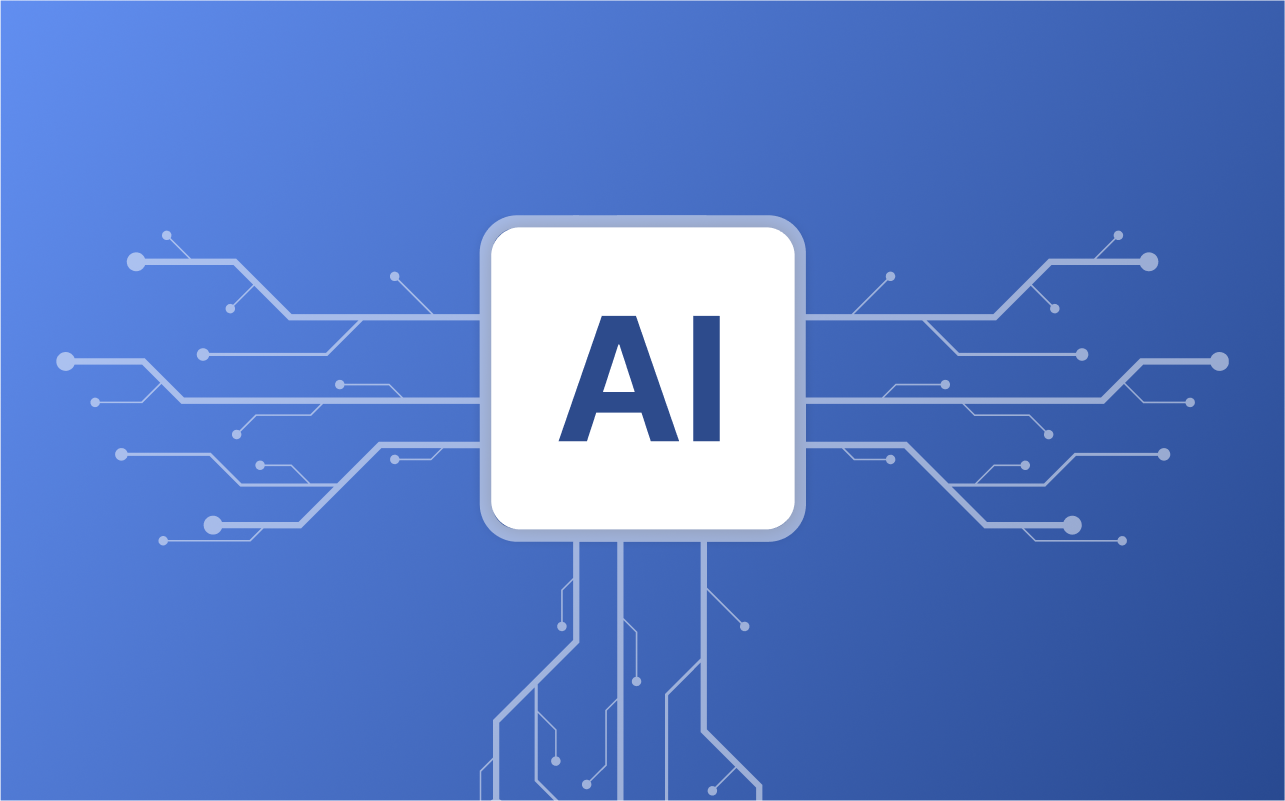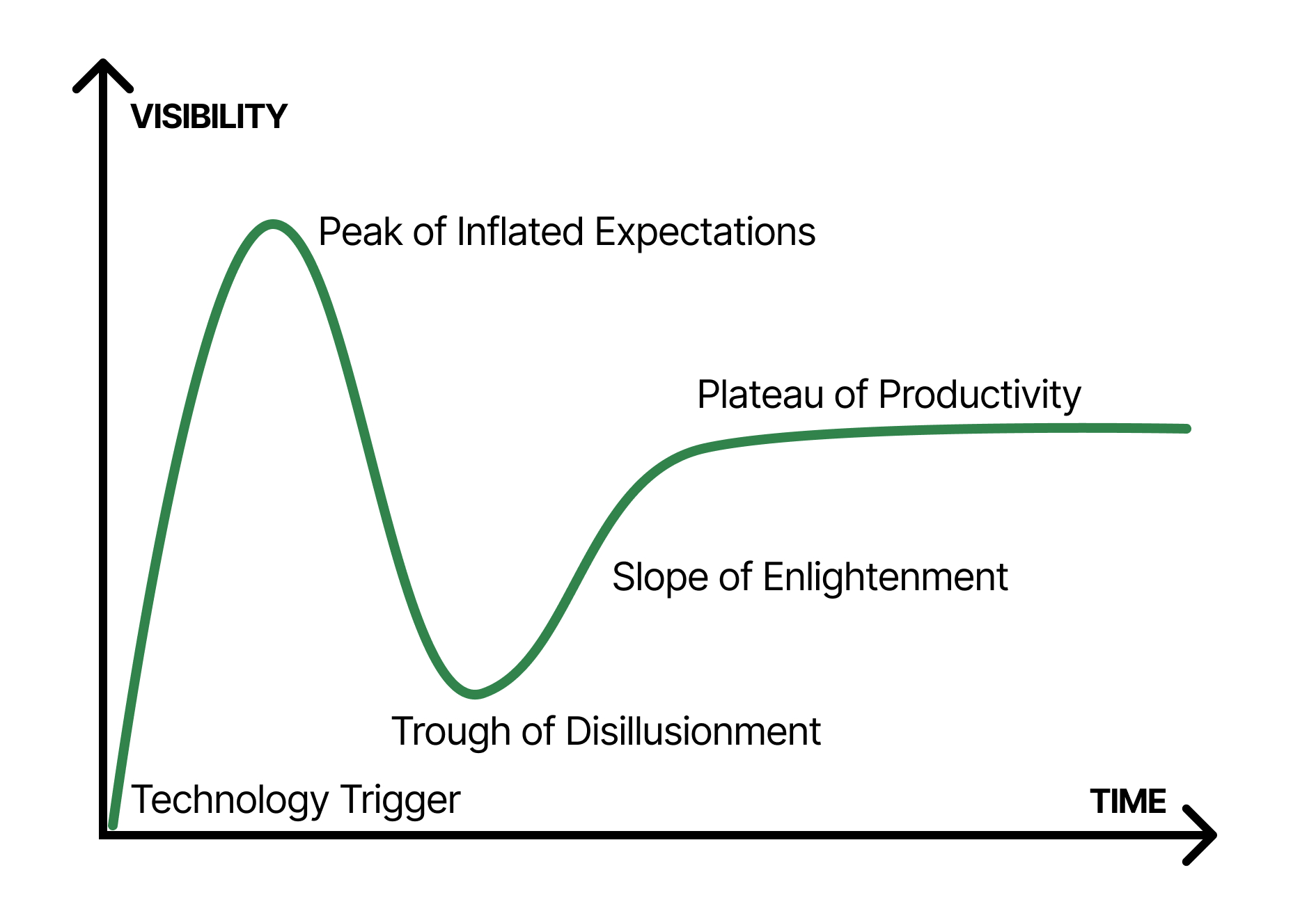
Traditionally, the staffing industry is not an early adopter of new technology. Our data shows that less than 5% of staffing companies offer their workers a mobile app. At the same time, staffing is a business that has very defined processes that are typically handled by humans, making it a great candidate for automation that enables humans to offload mundane aspects of their job and do more high-quality work. This thesis is a core driver of the solutions we make at Zeal.
Now, we’re in the early stages of an AI technology boom, and we’ve been thinking about how a new wave of AI automation can allow staffing companies to do more with less.
We see automation and AI as two pieces of a bigger solution that help staffing companies gain efficiencies:
We’ve been thinking about how staffing companies can benefit from AI. Some of these tools we’ve built, some others have built, and most have yet to be built. We are still in the early days of AI in staffing and we hope to see much more AI (and automation) being built by the broader staffing community. This isn’t an exhaustive list, but it’s a strong foundation for exploring what AI can do in staffing today, and where it’s headed.
We’re in the midst of what Gartner calls the “Peak of Inflated Expectations” for AI. The headlines are everywhere, startups are racing to launch “AI-powered” features, and investors are pouring money into anything with “AI” in the pitch deck. For staffing leaders, this can feel both exciting and overwhelming.

The reality is that many AI use cases are delivering real value right now, but others are still years away from operational reliability. And in the staffing world it’s likely that more use cases are farther off from delivering real value. History tells us that this inflated expectations phase is usually followed by the “Trough of Disillusionment,” when unrealistic promises give way to more measured adoption and sustainable models.
What this means for staffing:
Look for safe bets. Think about how to adopt AI-assisted workflows that limit the impact of negative outcomes. Having AI write an email to send to a candidate recruiting has a pretty minimal impact if that copy is bad or wrong.
Avoid high-risk bets. Avoid using AI to handle end-to-end processes, or having AI handle tasks with potential legal implications. Using AI to calculate overtime could be a compliance violation and a large penalty if it uses the wrong formula.
Strategic timing. Early adopters who choose proven use cases now can build a competitive advantage, but those chasing unproven tech risk wasting budget and trust.
Seek out operational wins. The AI hype cycle wants you to believe that using AI will bring you more revenue. In staffing, that’s highly unlikely. Remember AI is another form of automation. Look for the use cases that can improve your operational efficiency.
AI is poised to become a cornerstone of sales and demand generation in staffing. It can help teams prospect more effectively, communicate faster, and extract insights previously buried in manual workflows.
Key applications:
AI is already making a major impact on recruiting. Recruiting assistants can now handle repetitive tasks, evaluate candidates, and surface hidden gems in talent pools.
Key applications:
Onboarding is a bottleneck in most staffing workflows. AI can streamline it, ensure compliance, and make it more engaging for workers.
Key applications:
Filling shifts at the last minute is one of the hardest parts of staffing. AI can help anticipate needs, automate communications, and optimize schedules.
Key applications:
AI can help make sure timekeeping is accurate, fair, and compliant with minimal effort from managers or workers.
Key applications:
Payroll is one of the most critical areas to get right. While much of it should be fully automated, AI can offer new layers of intelligence and adaptability.
Key applications:
Billing is often a manual and error-prone process. AI can accelerate and improve accuracy throughout the lifecycle.
Key applications:
AI is transforming support, from how issues are triaged to how teams learn from them.
Key applications:
Reporting isn’t just about data, it’s about turning data into action. AI can help everyone from recruiters to execs understand what’s going on, fast.
Key applications:
AI can do a lot of impressive things, but it’s not ready to replace hard rules or human judgment in many parts of staffing. Let’s be clear about the limits and avoid disappointment.
It can’t replace people skills.
Staffing is built on relationships. AI can help you send messages faster or match resumes to jobs, but it can’t truly build trust, negotiate delicate situations, or understand a customer's problem the way an experienced human can.
Gino Rooney, former CEO of BlueCrew, said on Episode 1 of the Great Work Podcast:
“I don't believe you can have a completely autonomous staffing agency because I do think there is a really real component to having customer service as a competitive advantage.”
It can make mistakes.
While AI can be accurate, it’s not flawless. Unlike automation, which produces deterministic outputs given the same inputs, AI operates on probability and prediction. That means it can be right most of the time, but not all the time—and that distinction matters when accuracy is mission-critical. Sometimes it will misunderstand a job description, miss a great candidate, or give advice that just doesn’t fit your specific situation. Again, don’t use AI when the stakes are high. Use automation where precision is paramount; use AI where adaptability and speed are more valuable than perfect accuracy.
It still needs supervision.
AI works with the information it’s given. If the data is incomplete or outdated, it can make recommendations that miss important context. Avoid having AI do high value tasks without human review. Think of AI as a smart assistant, not a fully independent employee. You still need people to review its work, make final calls, and step in when something doesn’t look right. One guideline we have on the Zeal marketing team is “AI can be an input, but not the output.”
It can’t handle every edge case.
The staffing world is full of unusual situations—last-minute client changes, special payroll rules, or a candidate who needs extra onboarding help. AI is good at patterns, but humans are still better at handling the unexpected.
Jumping headfirst into every AI trend isn’t the goal—strategic adoption is. Every staffing company has a different maturity when it comes to their operations and readiness for AI. Using AI in the right places depends on your industry, clients, workers, and internal processes. Use the following steps as a guide to figure out what could work for your organization.
Agentic AI Will Take on Bigger Chunks of Work
We’re heading toward “agentic AI” where AI does more than answer a question, it actually takes a goal and carries it out across multiple steps. For staffing, that could mean giving an AI a request like “Fill this client’s weekend shifts” and having it source candidates, send outreach, confirm availability, update the schedule, and alert the client. This isn’t science fiction; early versions of these tools are already being used, and in the next few years, they could become a standard part of how staffing companies operate.
AI and Automation Will Work Together
Right now, automation handles the rule-based, repetitive stuff like running payroll or validating overtime and minimum wage compliance, while AI handles the “softer” side, like making recommendations or drafting messages. Over time, especially as agentic AI gets better, these two tools will combine to enable even greater operational efficiencies. That means your systems won’t just do the tasks; they’ll also decide which tasks to do, in what order, and how to adapt if something changes. Eventually this will happen across tools, giving you unified workflows that run almost entirely on their own, with humans stepping in only for oversight or exceptions.
We believe that, just like automation, there’s a place in staffing operations for AI—and that it's already beginning to show up in transformative ways. At Zeal, we’re not just building AI-powered tools; we’re building the infrastructure to support them.
To help make this future real, we’re excited to announce Zeal’s Model Context Protocol (MCP), a new way for developers to build AI agents and workflows that integrate seamlessly with the Zeal platform.
We’re just getting started. If you’re building AI for staffing, or dreaming of ideas we haven’t listed yet, this hackathon is your chance to build something amazing. Let’s build this future together.
Zeal is a financial technology company, not an FDIC insured depository institution. Banking services provided by Bangor Savings Bank, Member FDIC. FDIC insurance coverage protects against the failure of an FDIC insured depository institution. Pass-through FDIC insurance coverage is subject to certain conditions.
Mastercard® Debit Card is issued by Bangor Savings Bank, Member FDIC, pursuant to license by Mastercard International Incorporated. Mastercard is a registered trademark, and the circle design is a trademark of Mastercard International Incorporated. Spend anywhere Mastercard is accepted.